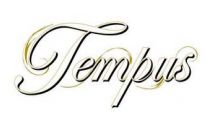In re Cerveceria Primus, S.A. de C.V., Serial No. 87460794 [not precedential], provides another reminder that when seeking to register a federal trademark registration that covers beer, you not only need to search for the same or similar marks that are used with the same goods (beer) but also look for marks that are used with commercially related goods (wine and spirits).
The settled rule is that it is not necessary that the respective goods be identical or even competitive in order to find that they are related for purposes of a likelihood of confusion analysis. The respective goods need only be “related in some manner and/or if the circumstances surrounding their marketing [be] such that they could give rise to the mistaken belief that goods emanate from the same source.” Coach Servs. Inc. v. Triumph Learning LLC, 668 F3d 1356, 101 USPQ2d 1713, 1722 (Fed. Cir. 2012) (quoting 7-Eleven Inc. v. Wechsler, 83 USPQ2d 1715, 1724 (TTAB 2007)). In other words, would a consumer believe that the same brand is being used to sell the goods.
The Applicant in the case of In re Cerveceria Primus, S.A. de C.V., Serial No. 87460794, sought to register the stylized mark TEMPUS for beer in Class 32, as shown below:

The Trademark Examining Attorney refused to register the mark based on a likelihood of confusion with the registered mark TEMPUS TWO (in standard characters) for wines in Class 33.
On appeal, Applicant submitted a number of different arguments for why wine and beer were not commercially related, many of which were fairly creative and extensive, and seeking to discredit the evidence submitted by the Examiner. However, Applicant could not overcome what has essentially become a per se rule– wine and beer are commercially related. Although, the TTAB has noted that there is no “bright-line rule,” multiple cases have routinely found beer and wine to be commercially related goods. See In re Sailerbrau Franz Sailer, 23 USPQ2d 1719, 1720 (TTAB 1992) (wine and beer found related goods based on third-party registrations); see also Anheuser-Busch, LLC v. Innvopak Sys. Pty Ltd., 115 USPQ2d 1816, 1826-27 (TTAB 2015); In re Kysela Pere et Fils, Ltd., 98 USPQ2d 1261, 1265 (TTAB 2011). The Board found the evidence submitted by the Examiner was sufficient to support a finding that beer and wine are commercially related goods, and such a finding was consistent with prior precedent.
Further, given the similarities of the trade channels and classes of purchasers, the similarity of the marks, and the conceptual strength of the cited mark, the Board affirmed that there was a likelihood of confusion between the stylized mark TEMPUS and the word mark TEMPUS TWO.
This case provides another reminder that in your search for the perfect beer trademark, don’t limit your trademark search to registered marks that cover beer in Class 32, but also look at wine and spirit registrations in Class 33.
The content of this article is intended to provide a general guide to the subject matter. Specialist advice should be sought about your specific circumstances.
